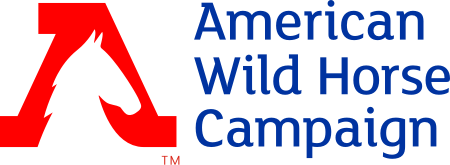Sulphur Herd Management Area
This is a very special herd. Some of the purest descendants of a genetic line tracing back to the steeds of the Spanish Conquistadors roam this HMA. Although some crossbreeding with other free-roaming breeds has undoubtedly occurred over the centuries, members of this herd still exhibit the hallmark coloration and physical attributes of their Iberian ancestors.
Learn more about the history of these prized mustangs here: http://www.americanspanishsulphur.org/
Four approaching near Pots-um-pa.
The Sulphur Herd Management Area (aka Sulphur Springs HMA), stretches along the Utah-Nevada border, spanning the entire western margin of Beaver County and extending a few miles north and south into Millard and Iron Counties. Access to northern viewing areas is relatively easy from Highway 21, about forty-five minutes west of Milford. When dry, many of the dirt roads in the flatlands immediately south of the highway are traversable by the family sedan, but venturing further in will require 4WD -- high clearance as well, depending upon which road or trail you choose.
My first sighting of these mustangs occurred in February 2015, a few days before the BLM removed about 100 horses from this location. Prior to this gather, the BLM estimated the Sulphur herd population at 830 horses. The photos below were taken during that visit.
Getting There
Eastern viewing areas are accessed about 45 miles west of Milford, UT on UT-21, with several turnoffs available over the next 15 miles. From the opposite direction along the same highway, western access lies just 22 miles southeast of Baker, NV. Baker is about 235 miles (3-1/2 hours) from Salt Lake City, Milford about 210 miles (3:15), both by way of Delta.
Viewing Locations
The BLM web page for this HMA suggests taking the Pots-um-pa turnoff between mile markers 31 and 32. This dirt road will take you toward the foothills of The Needles mountains, and may be travelled in the family sedan (as always, assuming dry conditions). While mustangs may appear anywhere throughout this herd area, I have had much better luck further west.
Lacking high-clearance 4WD, another excellent option is the water tank located in the foothills a few miles to the west. To reach this location, continue westward on UT-21 another 5 miles, crossing over Halfway Summit. The large fenced area encompassing the summit is part of the National Forest Service’s desert research range. Watch the western side of the highway for the stop sign near mile marker 25 (immediately after the fence ends), marking the road along the northern perimeter of this range. Keep right when the road splits about 1.7 miles in. You should already be able to see the water tanks ahead when the road forks again about 2 miles later. Take the left fork and follow the road up to the large tank. Even if mustangs are not nearby when you visit, you will notice numerous trails stretching through the desert toward this oasis, as well as fresh hoof prints and droppings. Notice also the remnants of an old corral in the basin to the west. You may be tempted to continue along this seemingly sedan-friendly road, but be warned that it quickly drops into a narrow wash within half a mile. Your best decision is to take advantage of this broad, flat space to turn around and make your way back out.
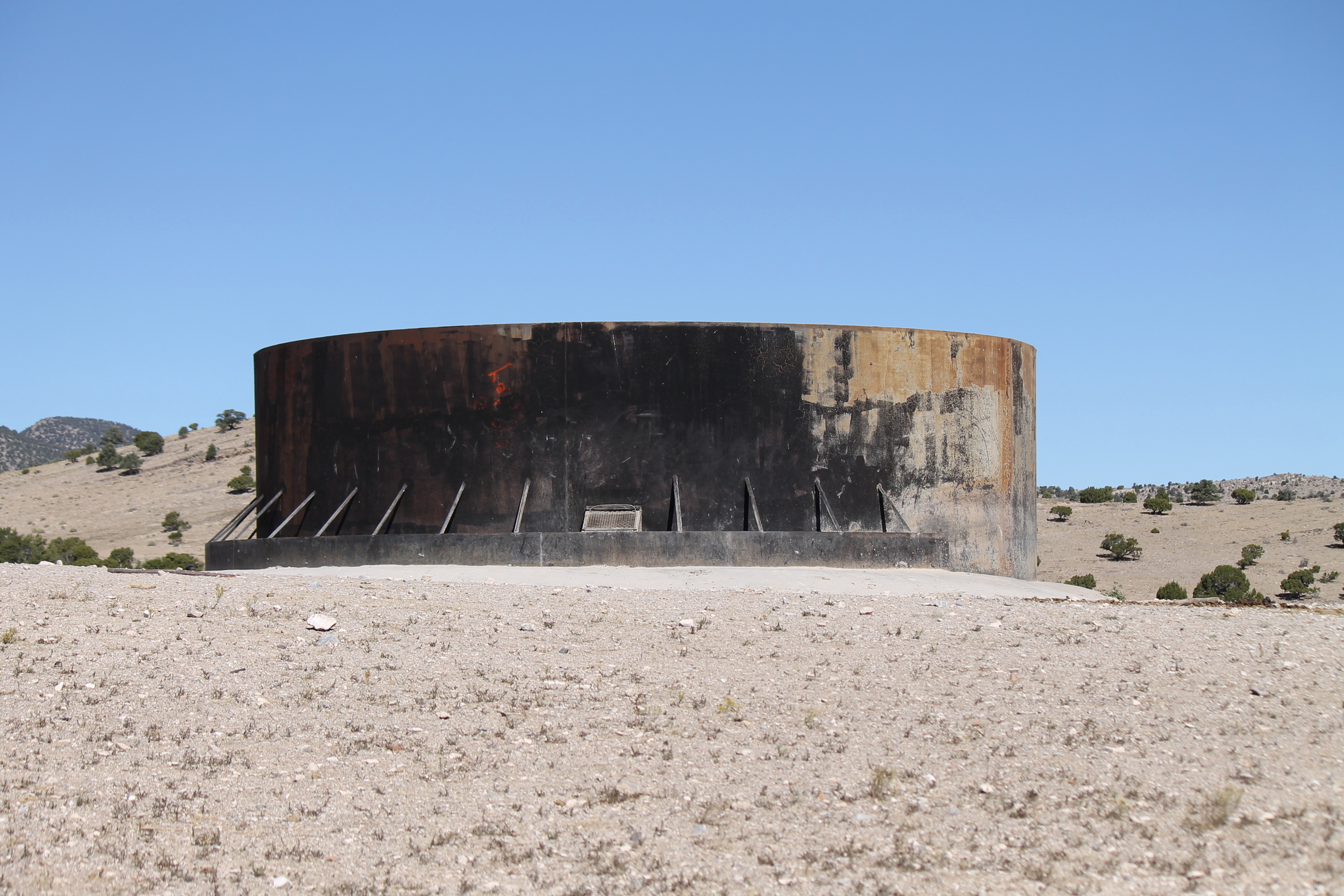
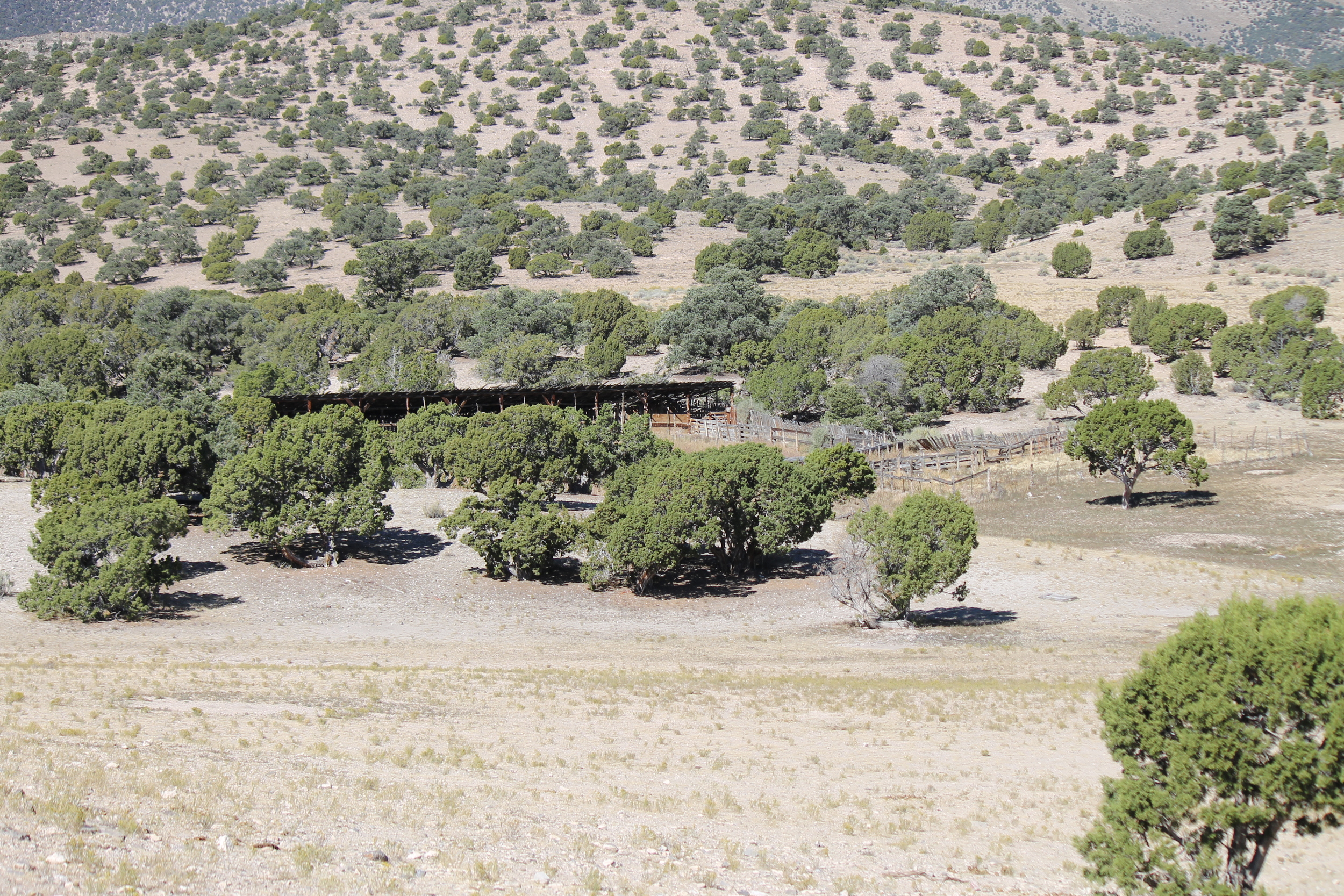
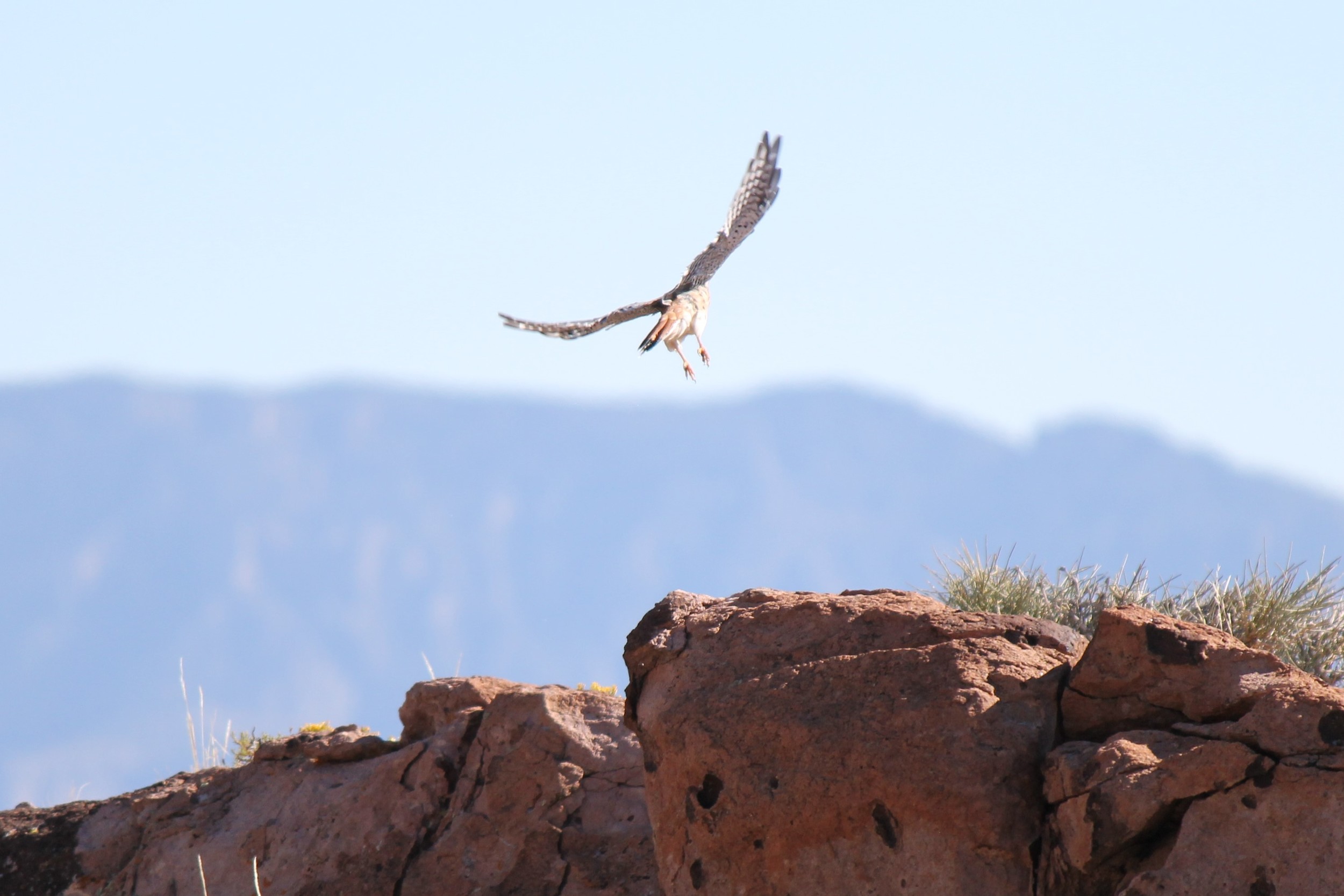

High clearance four-wheel drivers can take an alternative route to this location, beginning on the east side of Halfway Summit. Watch for the stop sign marking the turnoff about midway between mile markers 29 and 30. Follow this road as it winds about 60 feet down into a ravine, then back out. Keep to the right when the road forks about 3.5 miles in. Turn right at the intersection 0.4 mile later. Follow this road as it meanders along the western slopes of the Halfway Hills, ultimately skirting the research area fence line and joining the route detailed in the preceding paragraph 4.6 miles later. Turn left at this point, and left again 2 miles down the road.
High-clearance vehicles can also continue on a 9 mile trip beside prime mustang grazing pastures. For this high-probability excursion, retrace your route eastward from the water tank 0.4 mile, turning left at the fork. Turn left when the road T’s after 1.1 mile, and follow this road until it meets the highway near mile marker 18. This route will trace the foothills, with a two-mile-wide expanse of grazing land between you and the highway. I spotted 55 horses in four separate bands grazing this stretch in September 2015 (also visible distantly from the highway). The photos below were taken in this area.
Another option for the family sedan begins between mile markers 16 and 17: watch for the stop sign beside the highway. This road will take you into a dale known as The Cove, nestled between two arms of the Mountain Home foothills. Keep left as you exit, following the dirt road toward the foothills. 1.5 miles in, after winding through the hills, take the 2-track trail to the left. Watch for mustangs grazing in the foothills for the next three miles. The photos below were taken along this trail.
Four-wheelers can continue on a beautiful 16 mile trip through dense juniper and pinyon groves and secluded pastures, crossing back over the Mountain Home range to arrive at the fork below the water tanks. Beginning where we left off in the preceding paragraph, where the road merges with another from the northwest, continue into the foothill canyons. Take the left route when the road forks 4.6 miles later. The Nevada border is less than 2 miles to the west of this road. You’ll join another road from the west 3.1 miles further south and begin your eastward ascent. Another 4.6 miles, on your way down, keep left when the road forks, then right when it forks again 3.2 miles later. 1.1 mile further, and you’ve reached the fork below the water tanks.
Lush desert woods
Other Points of Interest
Baker, NV is the gateway to Great Basin National Park.
The Burbank Hills ATV trail system occupies the foothills east of UT-21, between Mormon Gap (near mile marker 17) and Pruess Lake (about 12 miles north).
Key GPS Coordinates:
Pots-um-pa turnoff: 38° 33.890' N113° 46.200' W
Turnoff to approach water tank from Halfway Hills: 38° 34.726' N113° 48.330' W
Water tank turnoff: 38° 37.897' N 113° 51.286' W
Water tank: 38° 36.150' N113° 55.073' W
Fork below water tank: 38° 36.334' N113° 54.676' W
Turnoff (entrance) near Mile Marker 18: 38° 43.068' N113° 55.285' W
Turnoff to The Cove: 38° 43.750' N113° 56.211' W
The Cove: 38° 43.771' N 113° 57.870' W
Woodlands route from The Cove back to the water tank:
Merge with road from northwest: 38° 41.554' N113° 59.508' W
First fork: 38° 38.400' N114° 1.192' W
Merge onto road from the west: 38° 36.141' N114° 1.429' W
Second fork: 38° 34.930' N113° 57.385' W
Third fork: 38° 36.950' N113° 55.587' W
Nearest Herd Areas
King Top: 30 miles northeast
Frisco: 40 miles east
Bible Springs: 50 miles southeast
Conger Mountain: 60 miles northeast
learn more about efforts to protect america's wild horses and burros
Wild Horse Tourist is not affiliated with any of these organizations, but we encourage you to support their vital mission.
